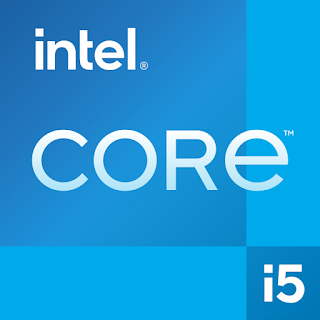An August 2016 announcement introduced the dual-core Intel Core i5-7Y54 SoC (system on a chip). Based on the Kaby Lake architecture, it is intended for use in passively cooled notebooks and tablets. The CPU has two processor cores that have a clock speed range of 1.2 to 3.2 GHz. Hyper Threading enables the CPU to run up to four threads concurrently. A dual-channel memory controller, VP9 and H video de- and encoders, and the Intel HD Graphics 615 GPU are also included on the chip. 265.
Because the Intel Core i5-7Y54's architecture is based on the well-known microarchitecture of the Skylake generation, the performance per MHz is identical. The chip has been enhanced with Speed-Shift technology, which allows for quicker dynamic adjustments of voltages and clocks, and the mature 14 nm process, which enables higher frequencies and better efficiency.
The Core i5-7Y54 is the Core m5-6Y54's replacement in terms of performance, and as such, because of the lower TDP, it cannot match the performance of other Core i processors. However, due to its high Turbo clock, the 7Y54 can occasionally compete with 15 Watt models under conditions of brief peak loads and single-thread operations. The clocks will start to slow down under heavy workloads. The CPU can still handle many more demanding applications and multitasking in spite of this.
Together with this processor, the integrated Intel HD Graphics 615 GPU operates at speeds ranging from 300 to 950 MHz and has 24 Execution Units. The TDP limit and memory configuration have a significant impact on the GPU's performance. With fast LPDDR3-1866 RAM in dual-channel mode, the GPU should occasionally be able to compete with the HD Graphics 520, but it can also be much slower in other circumstances. Only the lowest settings will allow modern games from 2016 to run smoothly.
The availability of hardware H decoding is one of Kaby Lake's most significant upgrades. Google's VP9 codec and 265/HEVC Main10 with a 10-bit color depth.
The Intel Core i5-7Y54 has a significant advantage in terms of power consumption because it is produced using FinFET transistors and an improved 14 nm process, which significantly increases power efficiency. According to the usage scenario, the Y-series' typical TDP, which is specified at 4 point 5 Watts, can be adjusted in both directions.
For tablets and passively cooled notebooks, the Intel Core i5-7Y54 is a reliable option. Thanks to the improved 14nm process with FinFET transistors, it provides adequate performance for more demanding applications and multitasking in addition to improved power efficiency. Despite its difficulties with contemporary games, the integrated Intel HD Graphics 615 GPU does support hardware H decoding. Google's VP9 codec and 265/HEVC Main10 with 10-bit color depth.
The 7Y54 could have a disadvantage in that it has a limited TDP, which could cause the clocks to drop significantly under heavy workloads. However, the 7Y54 should offer more than enough power for users who use their device primarily for web browsing, video playback, and basic productivity tasks.
Overall, users looking for a tablet or passively cooled notebook with a balance of performance and power efficiency should consider the Intel Core i5-7Y54. Support for H., the company's upgraded 14nm process. It is a flexible and effective option for a variety of tasks thanks to its dual-channel memory controller, 265/HEVC Main10 and VP9 codecs, and other features.
Regarding the article we shared with you today, we would be very interested in hearing your ideas and opinions. We think your input is important in assisting us in creating better content and giving you the knowledge you require.
To share your thoughts with us, kindly take a moment to leave a comment on the article.

